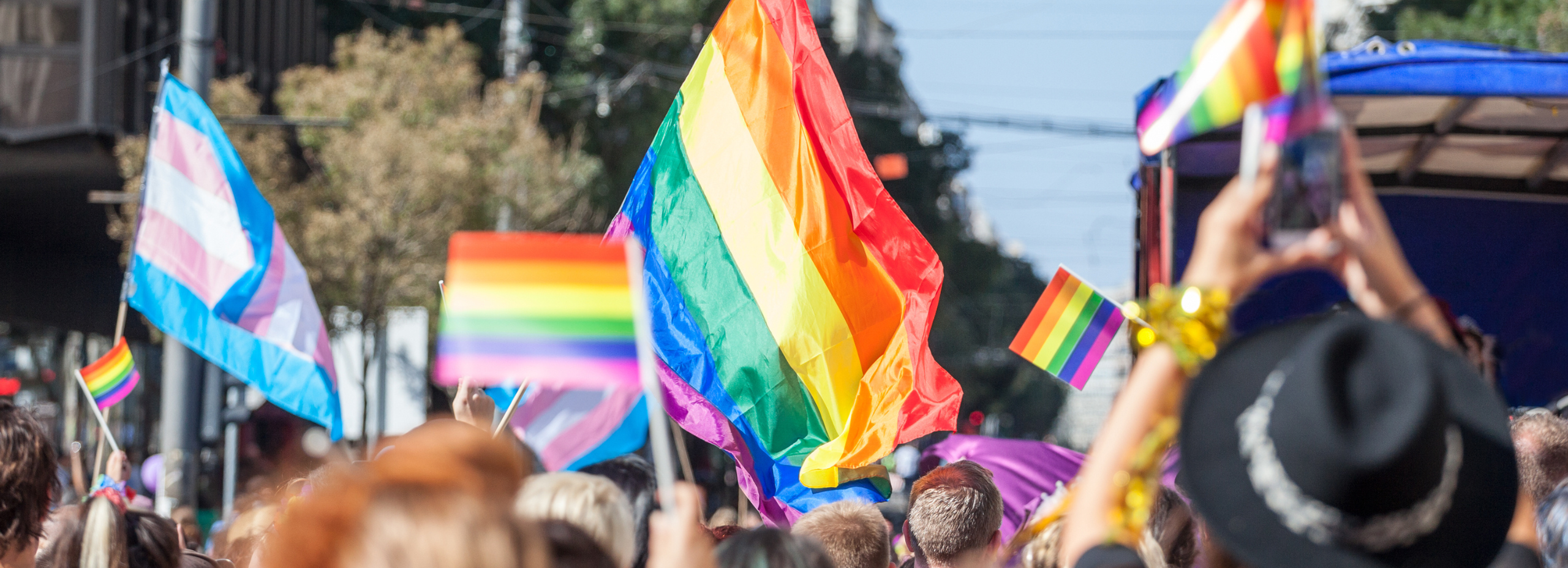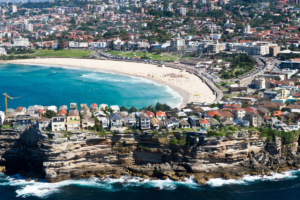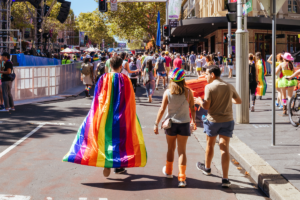‘No cops at pride’: The complex history of police at Mardi Gras
Australian Academy of the Humanities 2024-03-17
Content warning: homophobia, hate crimes against LGBTQI+ communities.

Over the last half century, antagonism between NSW Police and Sydney’s queer communities has been extensive and, at times, intense.
The recent, tragic deaths of Luke Davies and Jesse Baird — allegedly killed by Beau Lamarre-Condon, a NSW senior police constable — have rekindled and reactivated far-reaching communal sensitivities to the shocking histories of state violence, aggression and oppression of sexual minorities.
The first Sydney Mardi Gras was organised by Sydney’s Gay Solidarity Group on 24 June 1978 to commemorate Manhattan’s 1969 Stonewall Riots. The Stonewall protests were sparked by police harassment of a queer bar and are today widely regarded as the birth of the modern LGBTQ liberation movement.
Just under a decade later, hundreds of people gathered to march along Sydney’s Oxford St, calling for an end to discrimination, police harassment of ‘gays, women and blacks’ and for the repeal of the state’s anti-homosexual laws.
Out of the bars and onto the streets
To attract participants from the nascent, and more visible, commercial gay scene, the event adopted a deliberately festive vibe—a feature that continues to distinguish Mardi Gras from similar international protests.
The prominent references to ‘police attacks on gays, women and blacks’ in this first Sydney Mardi Gras reveal its participants’ collective familiarity with long histories of police brutality and harassment. The mid-century ‘underwear inspections’ that police used to intimidate and arrest cross-dressers compounded a lengthy history of arresting men for buggery.
As this first parade was dispersing, police began assaulting and arresting participants, with 53 arrests. Though most of the charges were later dropped, the impact of this police operation was devastating.
The Sydney Morning Herald published the names of those arrested exposing people’s homosexuality to their families, landlords and employers, leading to job losses. This police and media cruelty was all the more pronounced because in 1978, homosexuality was illegal in NSW and protections against discrimination were non-existent.
Around the world, police harassment of sexual and gender minorities has been a central concern of queer politics right from the birth of the modern LGBTQ movement.
Understanding police and queer community relations since the 1980s
The 1980s and 1990s saw some improvements in police–queer relations. Mardi Gras grew exponentially in popularity, scale and size. Hosting public events of this size required a working relationship between police and organisers.
Gay and lesbian advocates devoted enormous energy forging better relations with police. Their activism on law reform also successfully decriminalised homosexuality in 1984 and led to NSW’s anti-discrimination laws.
Simultaneously, Australia’s highly effective response to the 1980s AIDS crisis saw Federal and State governments fund community advocacy and education groups to provide subculturally appropriate education services and programs. The improvements were such that in 1987 when the Sisters of Perpetual Indulgence exorcised the ‘demon of homophobia’ from the Darlinghurst police station, the police could but watch in bemusement!
 An aerial shot of Bondi Beach. Approximately 88 gay men are suspected to have been murdered in anti-LGBTQI+ hate crimes within the Bondi Beach-Tamarama area from approximately 1970 to 1990. Many deaths were unreported and were considered accidents or suicides.
An aerial shot of Bondi Beach. Approximately 88 gay men are suspected to have been murdered in anti-LGBTQI+ hate crimes within the Bondi Beach-Tamarama area from approximately 1970 to 1990. Many deaths were unreported and were considered accidents or suicides.Nonetheless, tensions persisted after of a series of homicides and homophobic attacks, often occurring at gay cruising grounds, exposed the NSW Police’s disregard of the community — many of these murders remain unsolved.
Their woeful handling of these crimes was egregious and characterised by inaction, disregard, incompetence and neglect, prompting the 2022 NSW Special Commission of Inquiry into LGBTIQ Hate Crimes.
The Inquiry revealed that few police regarded the killing of queer people as a matter of significant concern. Some victims of these assaults, interviewed in Deep Water (2016, Blackfella Films), allege that the perpetrators included off-duty police.
While NSW Police have gone to great lengths to consign these shameful events to the past, troubling attitudes very clearly persist in the force.
In December 2023, NSW Supreme Court Justice John Sackar, head of the Inquiry, characterised NSW Police participation as ‘adversarial or unnecessarily defensive’, observing in his scathing report, ‘there appears to be a resistance in the NSWPF, even very recently, to acknowledging the extent of the hostility experienced by LGBTIQ people in the 40-year period under examination’ (p.31).
The Inquiry illustrates what many have suspected. That ‘…the magnitude of the historical problem, and the harm it has done to the LGBTIQ community, has not been adequately understood and acknowledged by the NSWPF…’
And ‘…efforts have not occurred within the context of any overarching or holistic plan that accounts for both the historical problem of the NSWPF interactions with the LGBTIQ community, and the need for engagement to be consistent and continuous.’
We wait to hear if NSWPF will to commit to implementing any of the Inquiry’s recommendations.
Modern concerns: police presence in queer spaces
Another cause of ongoing disaffection concerns policing of parties and queer precincts with what many consider inordinately heavy-handed and often aggressive tactics.
While it is no longer acceptable to target sexual and gender minorities directly in expressly homophobic operations, NSW police have allegedly made fulsome use of police powers regarding drug detection to harass, assault, intimate, humiliate and illegally strip-search participants in queer social spaces, festivities, dance parties and streetscapes. In 2009, police use of drug dogs to patrol Mardi Gras was so intense that observers compared the situation to 1978, where comparable numbers were arrested.
The issue came to a head in 2013, when policing of the Mardi Gras parade and after party was manifestly aggressive and intense.
The police’s brutal treatment of a young gay man, Jamie Jackson Reed, sparked outrage when a bystander uploaded to Youtube footage of Reed being thrown violently to the ground and held in place by an officer standing on his head.
The following week, hundreds of protestors rallied down Oxford St to the Surry Hills LAC to demand independent (rather than internal) investigations, an end to police violence and aggression including drug dog operations. Reed’s was one of numerous instances of police violence and mistreatment in 2013 and these would cost NSWPF almost $700,000 to settle the civil actions arising.
The policing and harassment of queer events, spaces and their participants under the pretext of drug detection cuts to the heart of queer community, because these events are central to the formation, affirmation, celebration, regeneration and playful expression of queer community: they have been now for close to half a century.
Marching at Mardi Gras: a genuine partnership or strategic PR?
 Three people walk down the street during Sydney WorldPride 2023, an international collaboration which saw over 300,000 attend pride events over 17 days.
Three people walk down the street during Sydney WorldPride 2023, an international collaboration which saw over 300,000 attend pride events over 17 days.Activist groups such as Pride in Protest have long called for an end to uniformed police marching in Mardi Gras. These have been rejected by the Mardi Gras board, who have faced criticism for ignoring the ongoing, routinised institutionalised ways in which police persecute and subordinate sexual, gender and racial minorities.
Independent, progressive politician Alex Greenwich was vocal in criticising Mardi Gras’ initial decision to bar police from marching. He argued that marching in the parade was important for LGBTQ Police, and that an official police presence affirms and promotes the value of tolerance in the force.
From this standpoint, Mardi Gras’ backflip that allowed police to march, but not in uniform, appeared to be a satisfactory compromise.
But from another perspective, the eagerness to retain police representation in the parade could be seen as an attempt to appease the desires of a manifestly violent police state to be celebrated and applauded.
Support QLife provides counselling and support for LGBTQI+ people on 1800 184 527 or qlife.org.au.
The post ‘No cops at pride’: The complex history of police at Mardi Gras appeared first on Australian Academy of the Humanities.